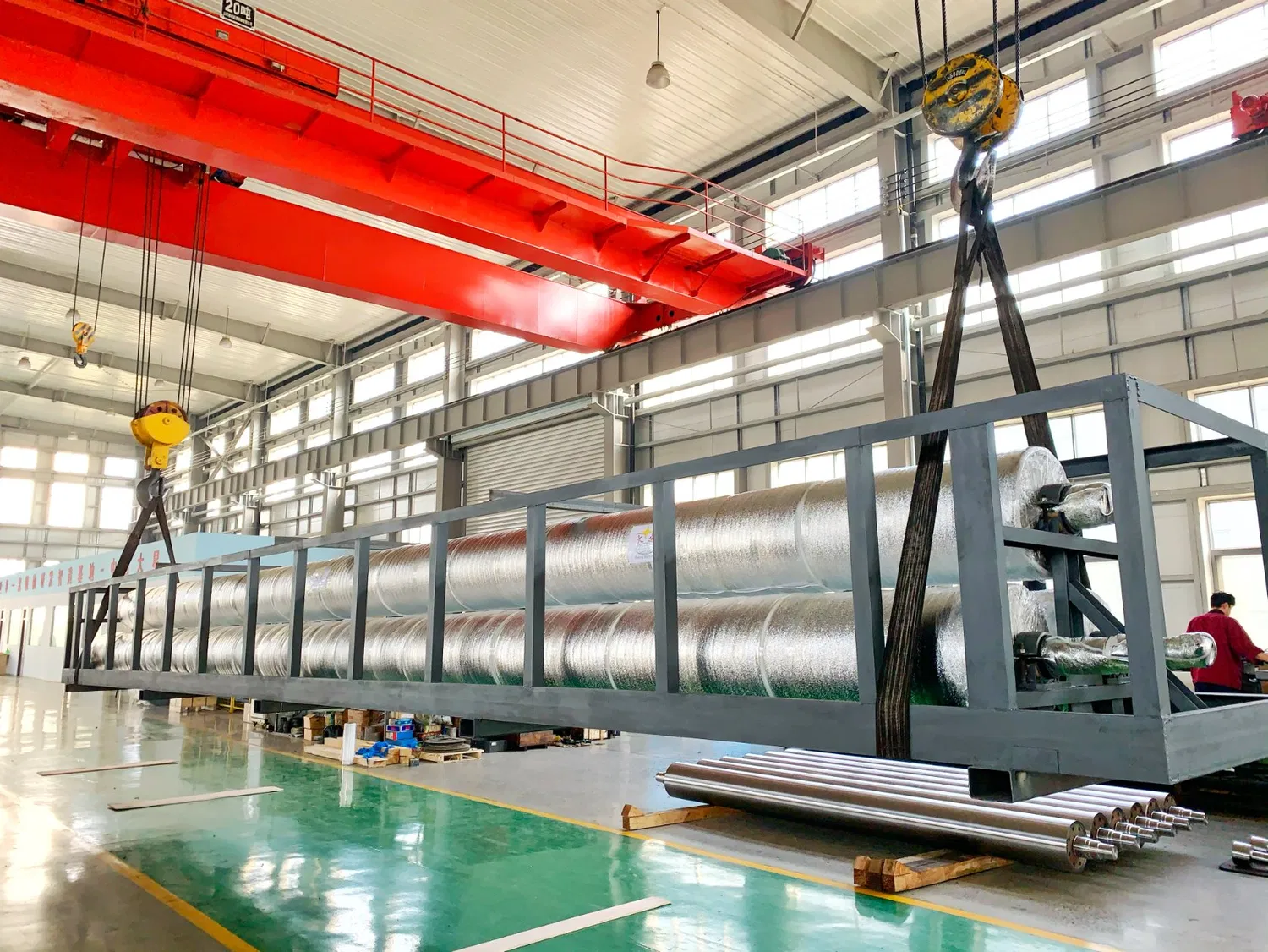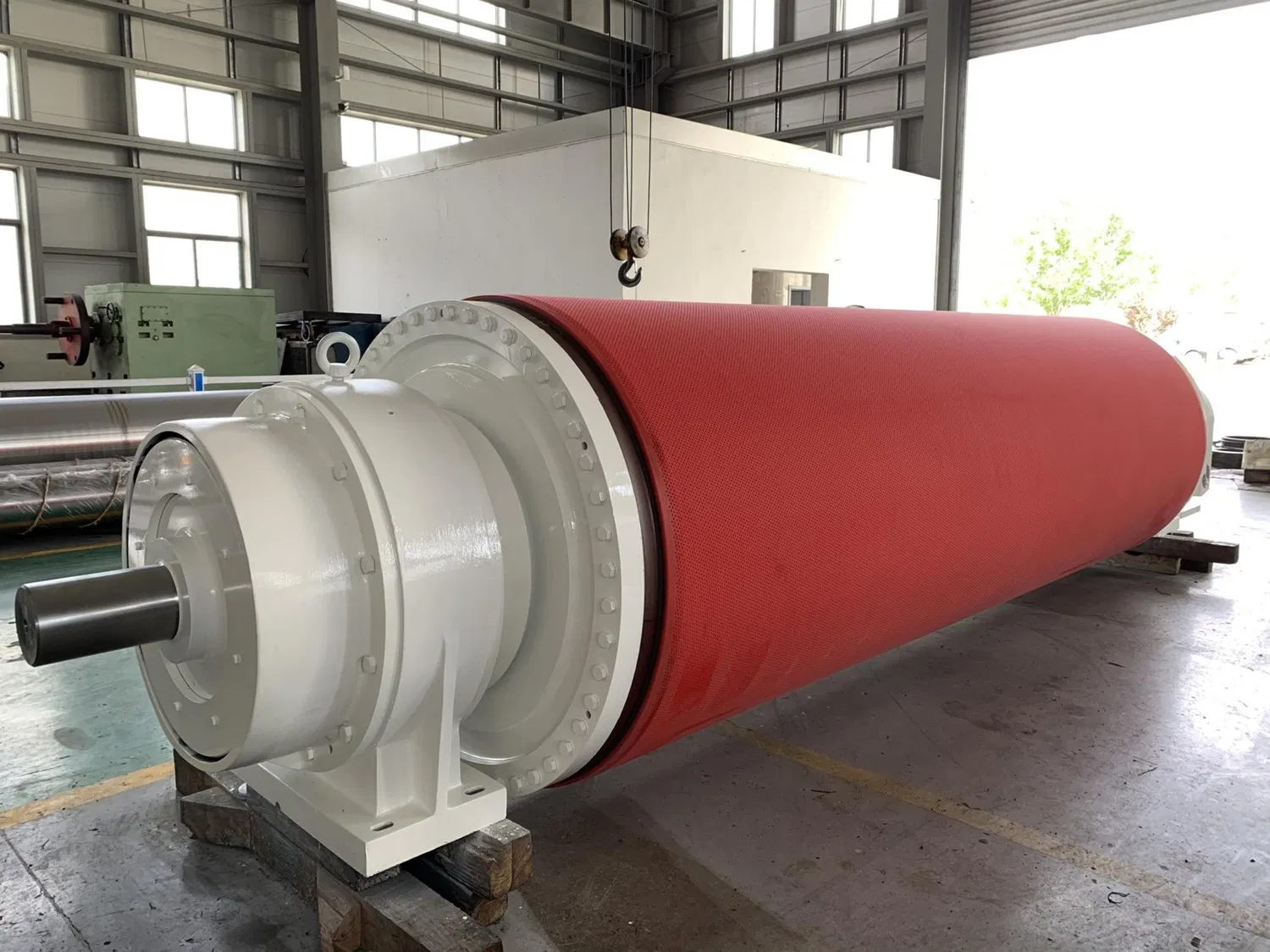The relentless operation of paper machines places immense stress on their critical components, none more so than the rollers. These cylindrical workhorses are the unsung heroes of paper production, guiding the pulp through various stages of drying, pressing, and calendering. However, their constant interaction with abrasive materials, high pressures, and varying temperatures inevitably leads to wear. Understanding the intricate wear mechanisms at play is paramount, not just for maintaining operational efficiency but for significantly extending the lifespan of these vital parts. In my experience, a deep dive into wear analysis, coupled with informed material selection, can realistically extend roller life by 30% or even more.
Understanding the Primary Wear Mechanisms Affecting Paper Machine Rollers
To truly appreciate how material selection can make a difference, we must first dissect the common culprits behind roller wear in a paper machine environment. These machines are not static; they are dynamic systems where a complex interplay of forces and substances constantly challenges the integrity of roller surfaces. It's worth noting that different sections of the paper machine will experience distinct dominant wear mechanisms.
Abrasive Wear: The Constant Grinding
Perhaps the most prevalent form of wear in paper machines is abrasive wear. The paper web itself, especially in its early, wet stages, contains fine particles of wood fibers, fillers (like clay and titanium dioxide), and other process chemicals. As the web moves across the roller surface under pressure, these particles act like tiny, relentless sandpaper, grinding away at the roller material. The severity of abrasive wear is directly proportional to the hardness of the abrasive particles, the applied load, and the sliding velocity. In sections like the press section, where significant pressure is applied to dewater the sheet, this abrasive action is particularly intense.
Adhesive Wear: The Unwanted Bonding
Adhesive wear occurs when surfaces in contact, under pressure, experience microscopic welding. Small asperities (high points) on the roller surface and the paper web can deform and bond together. As relative motion continues, these bonds break, leading to the transfer of material from one surface to another, or the formation of loose wear debris. While less dominant than abrasion in many paper machine applications, adhesive wear can become a significant factor, especially in high-speed sections or where lubricants are absent or ineffective.
Corrosion and Chemical Attack: The Silent Degradation
Paper manufacturing involves a cocktail of chemicals, including sizing agents, bleaching chemicals, and retention aids. These substances, often in aqueous solutions, can chemically attack the roller material, leading to corrosion or degradation of the surface. This is particularly true for rollers used in pulping, bleaching, and stock preparation stages. The presence of moisture further exacerbates these issues. Corrosion can weaken the surface, making it more susceptible to other forms of wear.
Fatigue Wear: The Stress of Repetition
Under repeated cycles of loading and unloading, as the roller rotates and the paper web passes over it, microscopic cracks can initiate and propagate within the roller material. This phenomenon, known as fatigue wear, can lead to surface pitting, spalling, or delamination. The high pressures in the press section and the dynamic loads experienced during calendering can contribute significantly to fatigue.

The Crucial Role of Material Selection in Mitigating Wear
Having established the primary wear mechanisms, it becomes clear that no single material will be universally optimal for all paper machine rollers. The key to extending roller life lies in selecting materials that possess inherent resistance to the dominant wear modes encountered in their specific application. This is where advanced material science meets practical engineering, offering solutions that can dramatically outperform traditional choices.
Enhancing Abrasion Resistance: The First Line of Defense
For rollers subjected to significant abrasive forces, the material's hardness and its ability to resist material removal are paramount. High-carbon steels, especially those with alloying elements like chromium and molybdenum, offer good hardness. However, for extreme abrasion resistance, consider advanced materials such as:
- Tungsten Carbide Coatings: Applied via thermal spray processes, tungsten carbide offers exceptional hardness and wear resistance, effectively creating a barrier against abrasive particles.
- Ceramic Coatings: Materials like alumina or zirconia can provide superior hardness and chemical inertness, making them ideal for highly abrasive and corrosive environments.
- Hardened Stainless Steels: Certain grades of stainless steel can be heat-treated to achieve significant surface hardness, offering a balance of wear resistance and corrosion protection.
Interestingly enough, the micro-structure of the material also plays a critical role. For instance, a fine-grained, uniformly dispersed carbide structure within a hardened steel matrix will offer more consistent and superior abrasion resistance compared to a coarse or unevenly distributed structure.
Combating Adhesive Wear: Surface Properties Matter
To minimize adhesive wear, materials with low surface energy and good lubricity are preferred. This can be achieved through:
- Specialized Polymer Coatings: Certain engineered polymers exhibit excellent low-friction properties and can prevent the formation of strong adhesive bonds.
- Surface Treatments: Processes like nitriding or PVD (Physical Vapor Deposition) coatings can create a hard, low-friction surface layer that reduces the tendency for adhesion.
- Material Compatibility: Selecting materials that are inherently less prone to galling or cold welding with the materials they interact with is also crucial.

Resisting Corrosion and Chemical Attack: The Protective Barrier
In environments where chemical attack is a concern, the choice of material must prioritize chemical inertness and corrosion resistance.
- Stainless Steels: Grades like 316L offer excellent resistance to a wide range of chemicals commonly found in paper mills.
- Nickel Alloys: For highly aggressive chemical environments, nickel-based alloys provide superior protection.
- Specialty Coatings: Fluoropolymer coatings (e.g., PTFE, PFA) are highly resistant to most chemicals and can also offer non-stick properties, further aiding in preventing buildup and wear.
Many experts agree that a robust surface treatment or coating is often more effective and economical than relying solely on the bulk material for corrosion resistance, especially when combined with other wear resistance requirements.
Improving Fatigue Strength: The Foundation of Durability
To enhance resistance to fatigue wear, the base material's inherent strength and toughness are critical.
- High-Strength Alloys: Select steel alloys with high tensile strength and good fatigue limit.
- Controlled Manufacturing Processes: Proper heat treatment, surface finishing, and stress relief during manufacturing are essential to minimize internal stresses that can initiate fatigue cracks.
- Surface Treatments: Shot peening, for example, can induce compressive stresses on the roller surface, significantly improving its resistance to fatigue crack initiation.
Case Studies and Real-World Impact: Achieving 30%+ Roller Life Extension
The theoretical benefits of advanced material selection are best illustrated by real-world outcomes. Many paper mills have transitioned from standard steel rollers to those incorporating advanced coatings or specialized alloys, reporting significant improvements. For instance, a mill experiencing rapid wear on its press section rollers due to abrasive filler particles switched to rollers with a tungsten carbide thermal spray coating. Prior to the upgrade, these rollers required replacement every 18 months. After the implementation of the new material, the operational life of these rollers extended to over 30 months, representing a more than 60% increase in lifespan and substantial savings in downtime and replacement costs.
Another example involves calendering rollers where surface smoothness and resistance to minor impacts are crucial. By opting for a hardened stainless steel with a polished, low-friction surface treatment, a paper producer saw a reduction in surface defects and a corresponding increase in roller life by approximately 40%. This was attributed to reduced adhesive wear and improved resistance to minor abrasive damage from residual debris.

The Holistic Approach: Beyond Material Selection
While material selection is undoubtedly the cornerstone of extending roller life, it’s important to acknowledge that it’s not the sole determinant. A holistic approach that considers operational parameters and maintenance practices is equally vital.
Optimizing Operational Parameters
Even the most wear-resistant material can be prematurely degraded if operated outside its optimal parameters. This includes:
- Pressure Control: Ensuring press section pressures are within the recommended range for the specific roller and paper grade.
- Web Tension: Maintaining consistent and appropriate web tension to avoid excessive stress on rollers.
- Cleanliness: Implementing rigorous cleaning protocols to minimize the accumulation of abrasive particles on roller surfaces and in the process water.
Proactive Maintenance and Monitoring
Regular inspection and condition monitoring of rollers can identify early signs of wear, allowing for timely intervention. This might include:
- Surface Profilometry: Measuring surface roughness and wear depth.
- Visual Inspections: Looking for pitting, spalling, or signs of corrosion.
- Vibration Analysis: Detecting imbalances or developing surface irregularities.
Implementing a predictive maintenance strategy based on these insights, rather than a reactive one, can prevent minor issues from escalating into catastrophic failures, further contributing to extended roller life.
Conclusion: A Strategic Investment in Longevity
The wear mechanisms affecting paper machine rollers are multifaceted, involving abrasion, adhesion, corrosion, and fatigue. However, by conducting a thorough wear analysis specific to each roller's operating environment and strategically selecting materials with enhanced resistance to these dominant forces, paper manufacturers can achieve significant improvements in roller lifespan. As demonstrated by real-world applications, extending roller life by 30% or more is not just a theoretical possibility but a tangible outcome of informed material engineering. This proactive approach represents a sound investment, leading to reduced maintenance costs, minimized downtime, and ultimately, a more efficient and profitable paper production process.
For more detailed information, please visit our official website:paper machine rollers
About the author: An expert in tribology and material science with over 15 years of experience in industrial applications, chenli specializes in wear reduction strategies for heavy machinery. Their research focuses on advanced material coatings and their impact on extending component lifespan in demanding environments, particularly within the paper and pulp industry.


